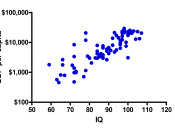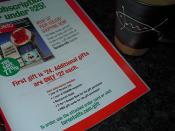Lesson 1
Short Answer
1. Define the experimental method. Describe one major way the experimental method differs from the correlational method.
The experimental method is a manipulation of an independent variable to look for an effect on a dependent variable. That is, the experimental method includes experiments to find the relationship between one dependent variable and one independent variable. Thus, the casual relationship between the dependent and independent variable can be clearly found due to the absence of the third variable. But the disadvantage is that the distorted behaviors - since there is just one dependent and independent variable, everything outside the variables are artificially kept constant.
The correlational method is different from the experimental method in this way: experimental methods can bring out the casual relationship between the dependent and independent variable, but correlational method cannot; experimental method can only draw a conclusion of dependent and independent variable response in direct proportion, inverse proportion, or no response, but correlational method can draw a conclusion showing how strong a variable responses to another.
2. Define what is meant by a positive correlation. Define what is meant by a negative correlation. Give one example of each.
A positive correlation means the correlation coefficient, r, is between 0 to +1, indicating that as one set of scores increases, a second set of scores also increases. For example: when a baby grows (age increases), its quantity of food eaten in meals increases.
A negative correlation means the correlation coefficient is between -1 to 0, saying that a set of scores goes in the opposite direction, or inversely, to the values to another score. For example, between the age of just born and 2 years old, when the baby gets older (age increases), time spent for sleeping decreases.
4. Compare and contrast the psychodynamic and...


